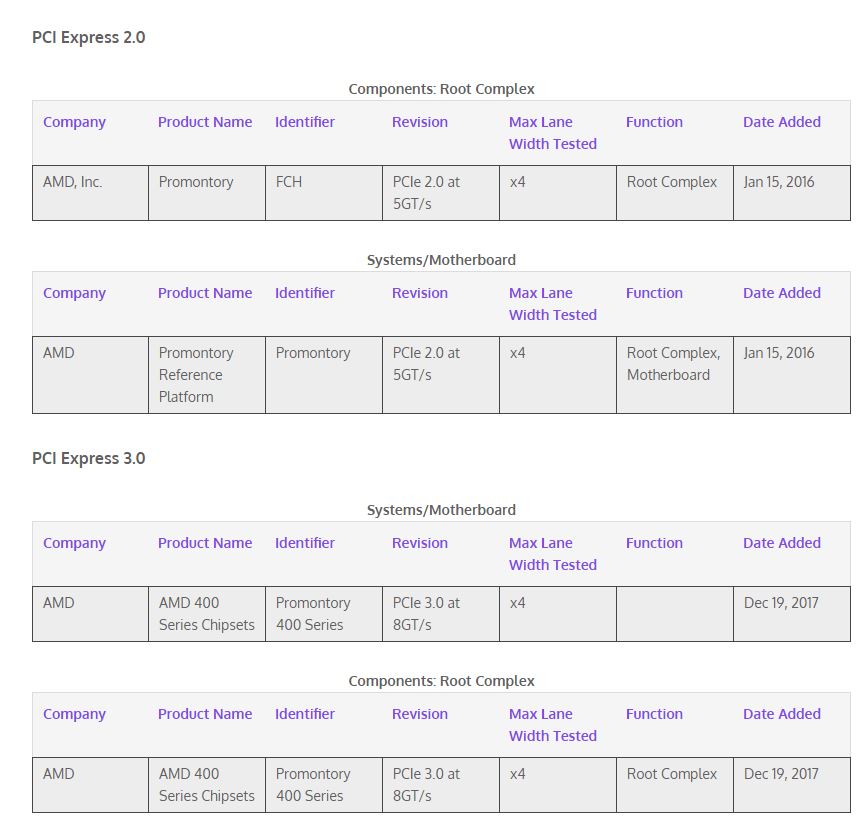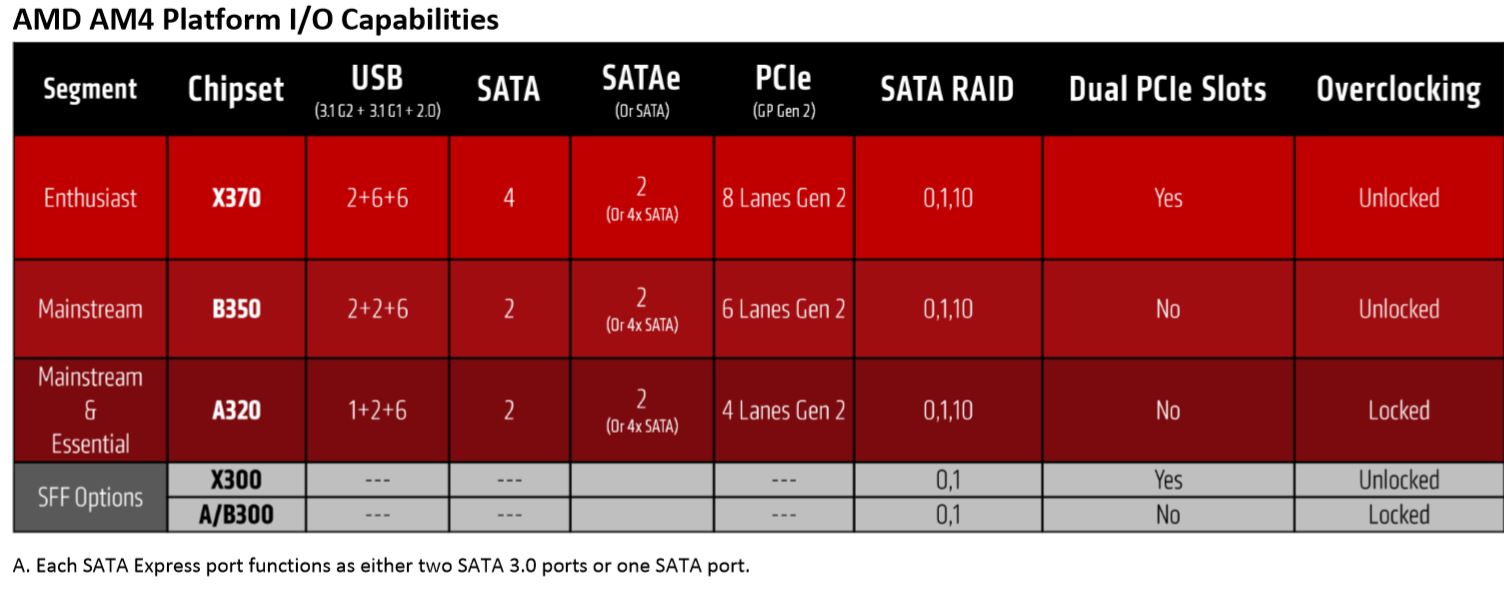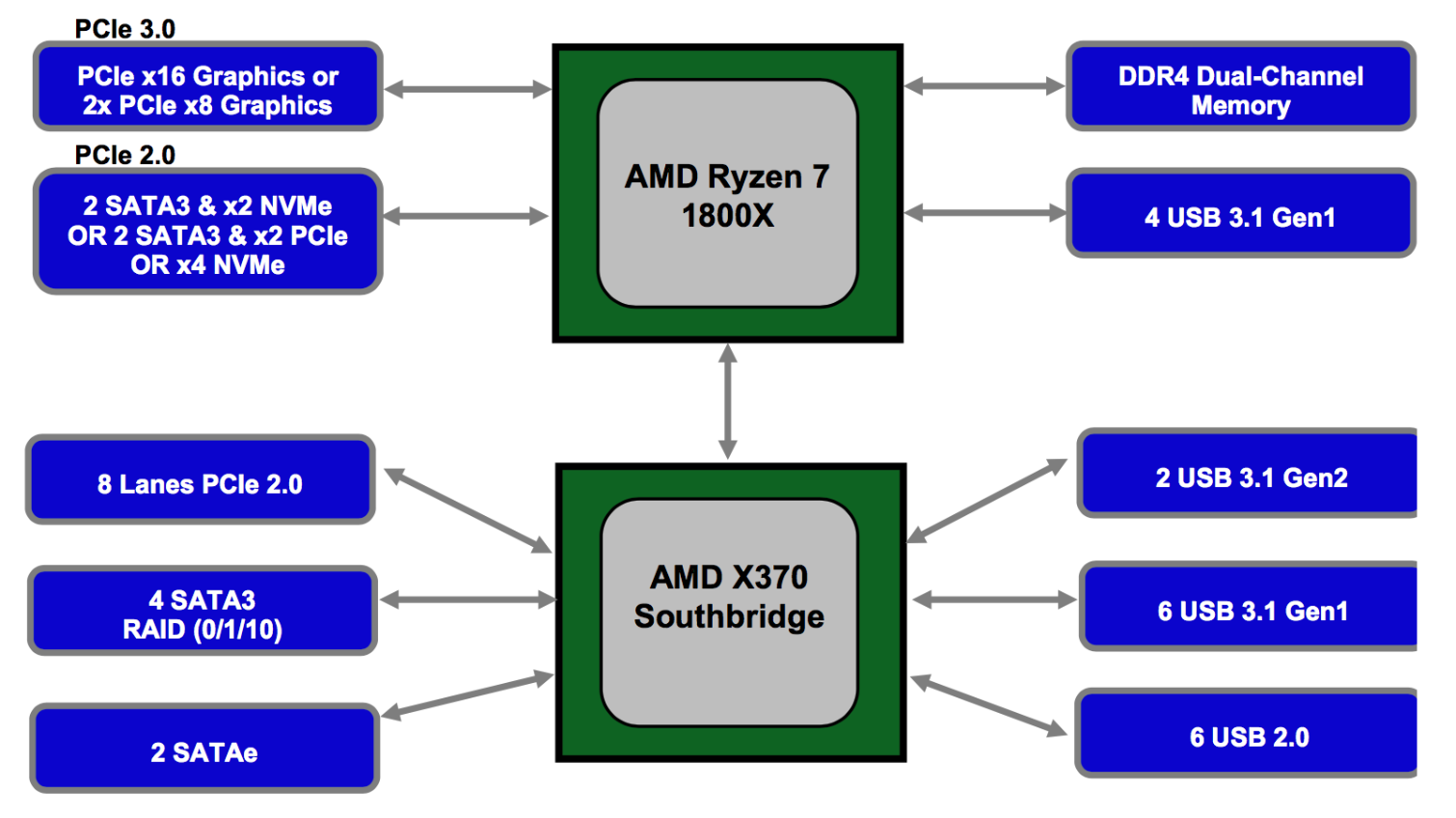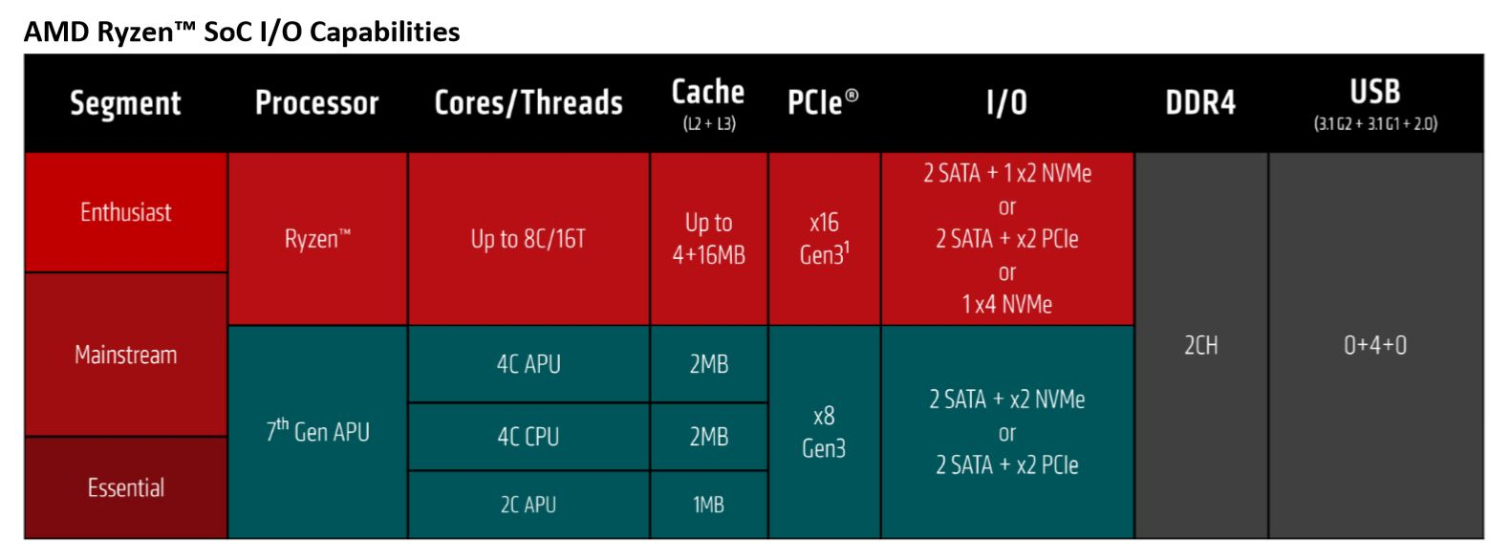Unannounced AMD 400-Series Chipset Appears In PCI-SIG Integrators List
AMD announced earlier this year that it would switch from 14nm LPP to GlobalFoundries' 12nm LP process, so naturally, we expect it to have new processors in 2018. Now there are signs that the company will also bring a new chipset to market with the updated processors.
And indeed, AMD has a new AMD 400 Series Chipset listing on the PCI-SIG site. (The PCI-SIG Compliance Program tests products and ensures interoperability with the PCIe interface.) The listing also includes the "Promontory 400 Series" as an identifier. AMD's current 300 Series chipsets also fall under the Promontory family. AMD's 400 Series Chipset Root Complex is also listed separately on the Integrators List. Notably, this new root complex features the PCIe 3.0 interface.

As you can see with AMD's previous Promontory platform entries, the 300 Series chipsets feature the PCIe 2.0 connection.

That means we will see an improvement to PCIe 3.0 for the unannounced 400 Series chipset, and that it will not come with PCIe 4.0. AMD has promised to support the AM4 platform and Socket 1331 until 2020, barring the introduction of DDR5 or PCIe 4.0 (which would change the pinout). That means these chipsets should be pin-compatible with the existing Ryzen processors.

The 300 series chipset provides up to eight PCIe 2.0 lanes for devices, and improving to a PCIe 3.0 connection will double performance. AMD stratified the introductory AM4 platform into four different 300 Series configurations that offer varying features for each target segment. In the past, AMD APUs leveraged the FM2+ socket, but FX-Series CPUs used the AM3+ socket. AM4 marks the move to a single unified socket for both CPUs and APUs. That includes X/B/A300 configurations for small form factors, A320 for essential applications, B350 for mainstream, and X370 for enthusiasts.

The Ryzen processors also have integrated SoC capabilities that allow the small form factor options, such as X300, to come without a standard controller hub. We haven't seen those come to market yet.
The Ryzen processors provide four lanes of PCIe 3.0 connectivity for high-performance storage devices, along with 16 lanes for graphics cards.
Get Tom's Hardware's best news and in-depth reviews, straight to your inbox.

AMD outsourced its chipset production to ASMedia in 2014, and we imagine the company continues to work in that role. The 300 series boards brought a nice power reduction and it's possible we could see an improvement with the 400 Series.
Considering AMD's commitment to supporting its platform for the long term, we imagine the new chipsets will work in tandem with Socket 1331 and existing Ryzen processors.
CES 2018 is fast approaching, and we expect more details to emerge at the show.

Paul Alcorn is the Managing Editor: News and Emerging Tech for Tom's Hardware US. He also writes news and reviews on CPUs, storage, and enterprise hardware.
-
jodeya.fw Naming based on core count would have made more sense. Wonder why they didn't do that in the first place.Reply -
msroadkill612 I have long wondered.Reply
So the RR apu seems to have 12x pcie3 lanes - 4x for the south bridge & 8x for the ~discrete GPU option.
I could live with the IGP & an 8 lane nvme adapter for a total of 3x 4 lane nvme drives. -
psiboy Good to see PCIe 3.0 support ans @Billy Gates go and read the tech comparisons between intel and amd ryzen chipsets. AMD are far more generous with PCI lanes and leave intel for dead with the number of lanes. Not only that they support them for longer so you have an upgrade path without having to buy a whole new mobo every year. Please continue to waste your money along with your ignorance on over priced Inhell hardware. I bet your an iPhone user too....Reply -
razamatraz PSIBOY, even if Ryzen was 100 times better than Intel in every way, his comment is still valid. Why do they continue to copy Intel's naming scheme. It's annoying and confusing for the less avid consumer.Reply -
DerekA_C You are going to complain about AMD copying one naming scheme the chipset while their CPU and GPU are not copies of anyone but pretty unique. There could be a reason to the chipsets being such a small model number and similar, maybe it is to be familiar with those that already understand the way Intel chipsets are laid out so it doesn't over complicate an already over saturated chipset market. Realistically there shouldn't be a new chipset for at least 3 years they should both design a future resistance path for upgrades. If either were as smart as they claim instead of as greedy as they show, our dumpsters and landfills wouldn't be filled with all this F***ing throw away S**t there is no excuse with technology, science, and mathematics, it is pure greed and it needs to stop.Reply -
alextheblue "The 300 series chipset provides up to eight PCIe 2.0 lanes for devices, and improving to a PCIe 3.0 connection will double performance."Reply
Well, you're still limited by the connection to the CPU. But it does give you more flexibility for NVMe storage, without having to rob lanes or add additional hardware (like a PCIe switch). Keeps costs down, opens options up even for economy motherboards. Pretty unlikely a consumer rig is going to fully load two super high performance x4 NVMe drives at the same time, on a regular basis. If you need more bandwidth than that for storage, you're probably better served by PCIe cards and/or a Threadripper.
Bottom line it's nice to have, if not essential. -
BulkZerker razamatraz, that's not confusing in the least. It made rather clear that a AMD 300 series board is at least as good as an Intel 300 series board. Oh wait it was better for it's price, so Intel has flipped their pervebial lids and rushed out a new chipset and processor. Oh wait a AMD board is still better dollar for dollar.Reply -
razamatraz Reply20527023 said:razamatraz, that's not confusing in the least. It made rather clear that a AMD 300 series board is at least as good as an Intel 300 series board. Oh wait it was better for it's price, so Intel has flipped their pervebial lids and rushed out a new chipset and processor. Oh wait a AMD board is still better dollar for dollar.
Stop fanboying. No one said anything about the quality of AMD versus Intel here. The naming scheme was a blatant copy of Intel's well established naming and intended to confuse nooblets. That is silly and confusing to anyone who doesn't follow as closely as the average Tom's reader.
As for their GPUs not copying...hahahahahaha what? Fury was new, Vega is kind of a new naming scheme but RX 460,470,480 550,560, 570,580....are you not old enough to remember the NVidia GTX 460 470, 480, 550, 560 570 and 580? At least in this case they copied something a few years old (and in the case of the GTX 470/480 not very good and hot as the sun) which might make it a worse scheme?
I get it, if numbers are the only thing you can use there are limited 3 digit options but come on there are infinite other ways to name things. X399 knowing Intel had announced X299 is blatant jackassery. X370 knowing Z370 was next in Intel's line and B350 knowing B350 was next in Intel's "business mainstream" line was a pure asshat move.